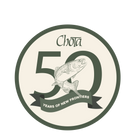CHRIS AND WILD BILL TAKE ON HARPERS FERRY!
The start of autumn marks one of the best times of the year for spending time outdoors, particularly on the water. The air is still pleasantly warm for wading and paddling, while the water is cooling down for some of the year’s best fly fishing. Remember last spring, when we covered our warehouse manager Chris’ paddling trip with his friend “Wild” Bill Whitworth? Well, the two recently reunited for their annual trip to Harpers Ferry, West Virginia, and we received photos and a full run-down of the trip. Chris also took the opportunity to test out our Hybrid High-Top Rubber-Soled Wading Boots (aka, Chota 15s), which hit dealers’ shelves soon. Keep on reading for the full story!
Harpers Ferry is a small historic town in West Virginia with a rich history dating back to before the American Revolution. The Appalachian Trail passes directly through the town, and the lower part of the town is located within Harpers Ferry National History Park. This ideal location along the Appalachian Trail and the National Park Service makes Harpers Ferry a fantastic destination for fishing and canoeing, including Chris and Bill’s floating trip.
According to Chris, he and Wild Bill started their trip in Virginia. “We made a stop at the South River Fly Shop in Waynesboro, VA to visit with Tom and Kevin to get the low down on the local water and the amazing work they are doing with Trout Unlimited to make the South River a year-round catch-and-release trout river. Just the day before we arrived a young man pulled a 27-inch brown trout out of the South River at Centennial Park.”
The South River Fly Shop was the perfect starting point for this epic adventure!
“With their advice we headed down to The Grottos to put in and floated the low water down to the Shenandoah. It was great fun pulling in Smallies, Rock Bass, and Sun Fish.”
Chris fished from his kayak and wet waded while catching smallmouth bass and sunfish.
Chris also put the upcoming Chota 15s, or High-Top Rubber-Soled Wading Boots, through their paces, wet wading at certain points along their float. Their felt-soled counterparts are known as the Chota 14s due to their weight at a mere 14 ounces. The sturdy rubber soles provided excellent traction with their slight extra weight, making them a great alternative for anyone looking for boots without felt soles.
The Rubber-Soled High-Top Wading Boots, or Chota 14s, performed brilliantly for wet wading.
“We made it up to Harpers Ferry to fish the Shenandoah and Potomac. Bill’s big boy was a 9-pound Channel Catfish. I caught my first catfish on the fly and my first smallmouth on the Potomac.”
Check out the size of that catfish! Bill makes those Camo Hippies and Chota boots look awesome!
Saturday we floated from the bridge at the Ferry down to Point of Rocks, MD. It was a great float, but with the Potomac running 1330 cfs, a few rocks took advantage of my old boat. With a quick Duct Tape patch I made the last 8 miles to the Point.”
Duct tape should be required gear on every kayak or canoe. Go ahead and stash a roll in your boat now.
“We ended the trip Sunday grabbing a few fish on the North Fork of the Shenandoah. Then I was back to work at Chota Monday morning.”
Great photos of an amazing trip, guys! Thanks for sharing!
Sounds like a fantastic weekend! We loved hearing about catching catfish using fly rods and that duct tape can truly fix anything, including canoes! If you live in the Southeast United States, then these next few weeks will be a great time for paddling and fly fishing as the leaf colors change. As always, we love to see pictures of our customers using their Chotas for outdoor recreation, so make sure to follow us on Facebook! For now, happy fishing!



